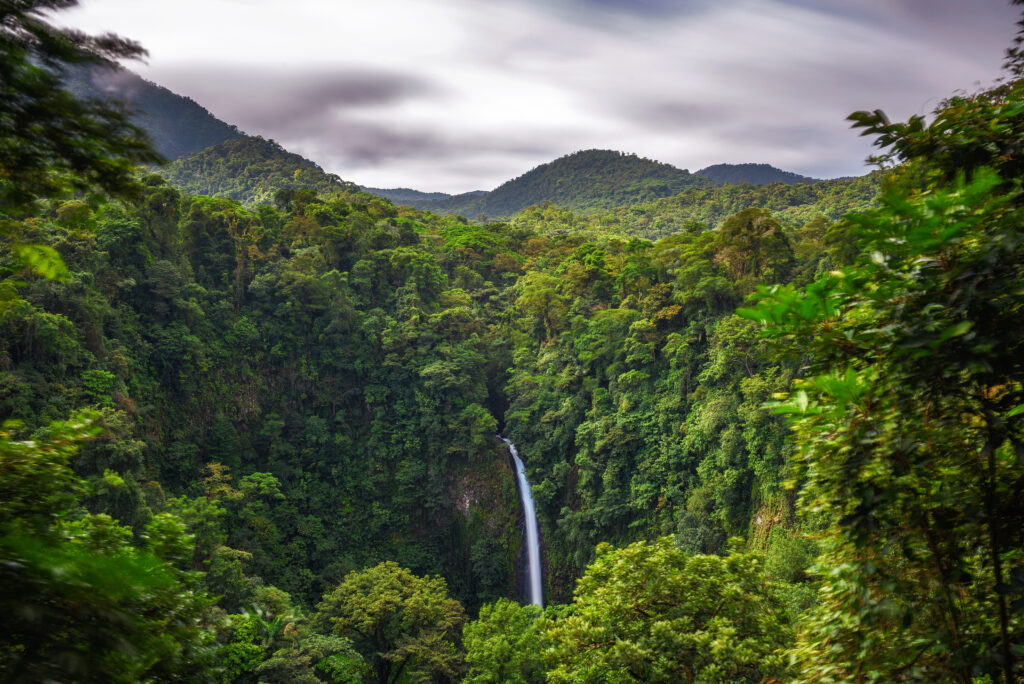Discover Costa Rica, a Central American jewel nestled between Nicaragua and Panama. With an idyllic tropical climate and biodiverse wildlife, Costa Rica provides the perfect backdrop for a vacation that combines relaxation with adventure.
Costa Rica Travel full Guide
Get In Accessing Costa Rica can be achieved through various means. Travelers can fly into the country through one of two main international airports, Juan Santamaría Airport near the city of San José, and Daniel Oduber Quirós Airport in Liberia.
For those near the borders, entry is possible via land from Nicaragua and Panama. Besides, Costa Rica also has several ports open to cruises and international shipping.
Get Around Getting around Costa Rica offers an experience of its own. The country has an extensive bus system, while rental cars and taxis are plentiful. The more adventurous might opt for domestic flights or boat rides, which provide unique perspectives of the country’s varied landscapes.
See Costa Rica’s natural wonders are its biggest attraction. From the mysterious cloud forests of Monteverde to the exotic wildlife in the Corcovado National Park, and the active Arenal Volcano, there’s a visual treat around every corner.
The country’s cultural landmarks, such as the Pre-Columbian Gold Museum in San José and Guayabo National Monument, are worth a visit as well.
Do Adventure seekers will find plenty to do in Costa Rica. Whether it’s surfing in Tamarindo, white-water rafting on the Pacuare River, or zip-lining through the rainforest canopy, the country offers a plethora of thrilling activities.
For those seeking tranquillity, yoga retreats, hot springs, and bird watching are popular activities.
Eat Costa Rican cuisine offers a delightful mix of flavors, with traditional dishes such as ‘Gallo Pinto’ (rice and beans), ‘Casado’ (a plate with rice, beans, salad, and meat or fish), and ‘Olla de Carne’ (a hearty beef stew). Tropical fruits and locally-grown coffee are also must-tries.
Drink Costa Rican beverages are as exciting as the food. ‘Café Chorreado,’ the traditional Costa Rican drip coffee, and the refreshing ‘Agua de Sapo’ (sugar cane and ginger drink) are local favorites.
Moreover, the country has a burgeoning craft beer scene worth exploring.
Sleep Accommodations in Costa Rica range from luxurious resorts to eco-lodges, boutique hotels, and budget-friendly hostels.
Whether you want a room with a beachfront view, nestled in a mountain, or amidst bustling city life, Costa Rica offers a wide variety of options to suit every traveler’s needs.
Stay Safe Costa Rica is generally considered a safe country for tourists, but like any travel destination, it’s essential to take precautions. Avoid carrying large amounts of cash, be aware of your surroundings, and use licensed taxi services.
Stay Healthy Healthcare in Costa Rica is top-notch, with both public and private hospitals available throughout the country.
Remember to stay hydrated, protect against sunburn, and take precautions against mosquitoes, which can carry diseases like dengue and Zika.
Respect Costa Ricans, or “Ticos,” are known for their friendliness and warm hospitality. Respect the local culture and the environment, especially when visiting protected areas. The country’s strong commitment to conservation is a key aspect of its national identity.
Climate
With its tropical climate, Costa Rica enjoys warm weather throughout the year, although the country has a dry season (December to April) and a rainy season (May to November).
Due to its varied geography, temperatures can significantly vary between the coastal areas and the mountainous regions. Pack accordingly, keeping in mind that even in the rainy season, mornings are typically clear and sunny.
Regions
Costa Rica is divided into seven provinces, each with its unique appeal:
- San José: Home to the bustling capital city of the same name, it’s the cultural and economic heart of the country.
- Alajuela: Known for its stunning volcanic landscapes, including the famed Arenal Volcano.
- Heredia: Enveloped by coffee plantations and beautiful landscapes, it’s also home to the historic city of Heredia.
- Cartago: Boasts important historical sites such as the Guayabo National Monument and the stunning Irazú Volcano.
- Puntarenas: With the Nicoya Peninsula and its popular beaches, this province is a haven for sunseekers.
- Limón: Known for its Afro-Caribbean culture and the lush Tortuguero National Park.
- Guanacaste: Famous for its Pacific Coast beaches and the vibrant Rincon de la Vieja National Park.
Talk
Spanish is the official language of Costa Rica, and understanding a few basic phrases can enhance your travel experience. However, English is widely spoken in tourist areas, so you can navigate most situations with ease.
Money
The official currency of Costa Rica is the Costa Rican colón. U.S. dollars and credit cards are widely accepted in most tourist areas. ATMs are also readily available for cash withdrawals. It’s advisable to keep small denominations for local markets or rural areas where card machines might not be available.
Connect
Staying connected in Costa Rica is relatively easy, with widespread Wi-Fi access in hotels, restaurants, and even some public areas. The country has a robust cellular network, and prepaid SIM cards are readily available if you want data on the go.
Learn
Immerse yourself in the “Pura Vida” lifestyle of Costa Rica. This phrase, translating to “Pure Life,” encapsulates the country’s ethos of positivity and appreciation for the simple joys of life. Costa Rica has a rich history and vibrant culture that’s worth exploring through its many museums, galleries, and local interactions.
Shop
Shopping in Costa Rica offers a variety of local crafts, gourmet products, and souvenirs. Look for handmade pottery, traditional wooden masks, or organic coffee and chocolates. Many of these items can be found in local markets or artisan shops.
Cope
Visitors to Costa Rica will find a friendly and welcoming atmosphere. The country’s infrastructure is generally good, and clean drinking water is available in most areas. If you have special needs or require assistance, it’s advisable to check with your hotel or tour operator to ensure accommodations are made.
Go Next
Costa Rica’s central location makes it a great starting point for exploring the rest of Central America. Consider heading north to Nicaragua to discover its colonial cities and massive lakes, or south to Panama, famous for its canal, diverse wildlife, and vibrant indigenous cultures.
Top-Rated Family Travel Agency in Aurora, CO









